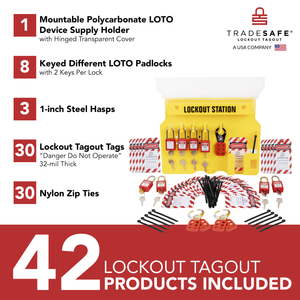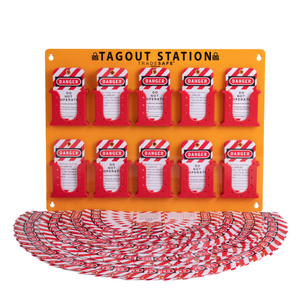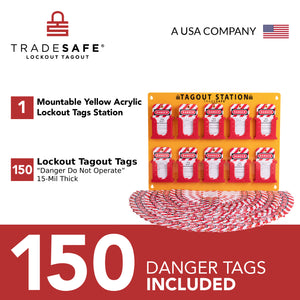-
-49%


Estación de bloqueo y etiquetado: mediana
Precio habitual $109.95Precio habitual$215.00-49%Precio de oferta $109.95 -
-31%


Estación de bloqueo y etiquetado: grande
Precio habitual $169.95Precio habitual$245.00-31%Precio de oferta $169.95 -
-40%


Estación de bloqueo y etiquetado - XL
Precio habitual $199.99Precio habitual$335.00-40%Precio de oferta $199.99 -
-25%


Estación de bloqueo y etiquetado - XL
Precio habitual $399.95Precio habitual$529.95-25%Precio de oferta $399.95 -
-42%


Estación de bloqueo y etiquetado: grande
Precio habitual $77.95Precio habitual$135.00-42%Precio de oferta $77.95 -
-28%


Estación de bloqueo y etiquetado: grande
Precio habitual $179.95Precio habitual$249.95-28%Precio de oferta $179.95 -
-16%


Gabinete de estación de bloqueo y etiquetado con 70 dispositivos LOTO
Precio habitual $420.95Precio habitual$499.00-16%Precio de oferta $420.95 -
-36%


Gabinete de la estación de bloqueo y etiquetado: no se incluyen dispositivos de bloqueo y etiquetado
Precio habitual $189.95Precio habitual$299.00-36%Precio de oferta $189.95 -
-14%


Gabinete de la estación de bloqueo y etiquetado: no se incluyen dispositivos de bloqueo y etiquetado
Precio habitual $299.95Precio habitual$349.95-14%Precio de oferta $299.95 -
-20%


Gabinete de la estación de bloqueo y etiquetado: no se incluyen dispositivos de bloqueo y etiquetado
Precio habitual $389.95Precio habitual$489.95-20%Precio de oferta $389.95 -
-23%


Gabinete de estación de bloqueo y etiquetado con 70 dispositivos LOTO
Precio habitual $369.95Precio habitual$479.95-23%Precio de oferta $369.95 -
-23%


Gabinete de estación de bloqueo y etiquetado con 70 dispositivos LOTO
Precio habitual $369.95Precio habitual$479.95-23%Precio de oferta $369.95 -
-33%


Gabinete de estación de bloqueo y etiquetado con 70 dispositivos LOTO
Precio habitual $159.95Precio habitual$239.95-33%Precio de oferta $159.95 -
-36%


Estación de bloqueo y etiquetado para etiquetas LOTO: 150 etiquetas incluidas
Precio habitual $189.95Precio habitual$299.00-36%Precio de oferta $189.95 -
-65%


Estación de bloqueo y etiquetado para etiquetas LOTO - Etiquetas no incluidas
Precio habitual $69.95Precio habitual$199.00-65%Precio de oferta $69.95 -
-23%


Estación de bloqueo y etiquetado de candados de seguridad - Se adapta a 20 candados - Candados LOTO incluidos
Precio habitual $153.95Precio habitual$199.00-23%Precio de oferta $153.95 -
-21%


Estación de bloqueo y etiquetado de candados de seguridad - Se adapta a 20 candados - Candados LOTO no incluidos
Precio habitual $38.95Precio habitual$49.00-21%Precio de oferta $38.95 -
-45%


Estación de bloqueo y etiquetado de candados de seguridad - Se adapta a 10 candados - Candados LOTO incluidos
Precio habitual $75.95Precio habitual$139.00-45%Precio de oferta $75.95 -
-30%


Estación de bloqueo y etiquetado de candados de seguridad - Se adapta a 10 candados - Candados LOTO no incluidos
Precio habitual $27.95Precio habitual$39.95-30%Precio de oferta $27.95 -
-41%


Almacenamiento portátil de candados de seguridad: se adapta a 12 candados de bloqueo
Precio habitual $22.95Precio habitual$39.00-41%Precio de oferta $22.95
Mantener los dispositivos de bloqueo y etiquetado organizados de manera consistente y en un solo lugar puede ayudar a mejorar la seguridad en el lugar de trabajo y garantizar el cumplimiento de las normas de OSHA. Las estaciones de bloqueo y etiquetado pueden proporcionar un lugar confiable y altamente visible para almacenar y organizar todos y cada uno de los dispositivos y suministros de bloqueo.
TRADESAFE entiende la necesidad de organización y el establecimiento de procedimientos de rutina en los programas de bloqueo y etiquetado. Estas estaciones de bloqueo pueden ayudar a los empleados a ejecutar procedimientos de manera fácil e intuitiva porque todos los dispositivos involucrados se pueden encontrar de manera confiable en un solo lugar.
También puede colocar estratégicamente estaciones LOTO en lugares visibles y convenientes cerca de los interruptores de las máquinas o en áreas centrales. Todas nuestras estaciones de bloqueo y etiquetado vienen con una variedad de dispositivos y suministros. Estas estaciones no solo son muy útiles, sino que también son una gran ganga.








































